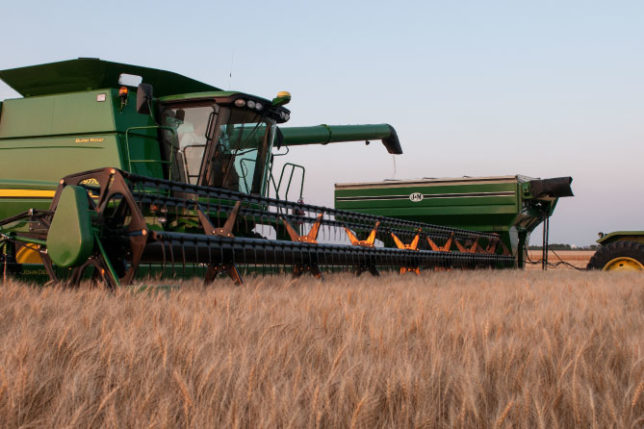As the crop grows and matures, farmers’ thoughts will be moving towards preparing for harvest. It is important to prepare for harvest by performing routine maintenance of the necessary equipment and storage facilities early to ensure a smoother entry into harvest, hopefully with fewer breakdowns and delays.
Efficiency is important during harvest as farm sizes increase while the harvest window remains the same. Taking the time to do an inspection of your equipment for potential problems before heading into the first field can reduce machinery repair costs and downtime. Beginning combine and other equipment preparation a few weeks before harvest will ensure replacement parts are available.
According to tractorlife.com, pre-harvest checks on the combine should include the following:
- A thorough cleaning of the combine to remove any residual field trash from the previous year, over-winter rodent nests, and oil and grease build up.
- While greasing the machine, check for loose screws, missing nuts, and other damaged or missing shields and parts.
- Inspect all belts, chains, bearings, and drive components replacing any that may not last through the season.
- The operator’s manual should be followed for proper combine adjustments.
- Also check the auger spirals, headers, cutter bars, knives, and skid plates for top performance.
- Ensure the yield monitor, GPS system, and other components have been backed-up, calibrated, and are providing accurate information.
It is also important to pre-scout fields for weed issues that may cause problems. Viney weeds can create difficult challenges, especially during soybean harvest. Waiting until these weed patches dry down before you harvest or spot spraying may be a good strategy.
Prepare storage bins before harvest by emptying the bin and removing all traces of the previous crop to reduce and eliminate possible disease and pest contamination.
The following are a few pre-harvest grain cart tips from Kinze Manufacturing:
- Inspect augers for wear.
- Inspect and adjust drive belts, hydraulics, and lights, and service the PTO.
- Reset the torque on the wheel nuts and check tire pressure on wheeled carts. On track carts, check the bolts and tension on the track.
- Check the oil in the gearbox.
- Confirm the accuracy of the scale system.
It’s also a good idea to ensure all staff and equipment operators know the potential hazard areas both in and out of the field. Don’t assume all staff members are aware of gullies and ditches in the field. A quick review of the area, including field access roads, before moving into a new field may be a good idea. With the long hours and fatigue that often come with harvest this step can mitigate possible safety challenges.







Leave A Comment